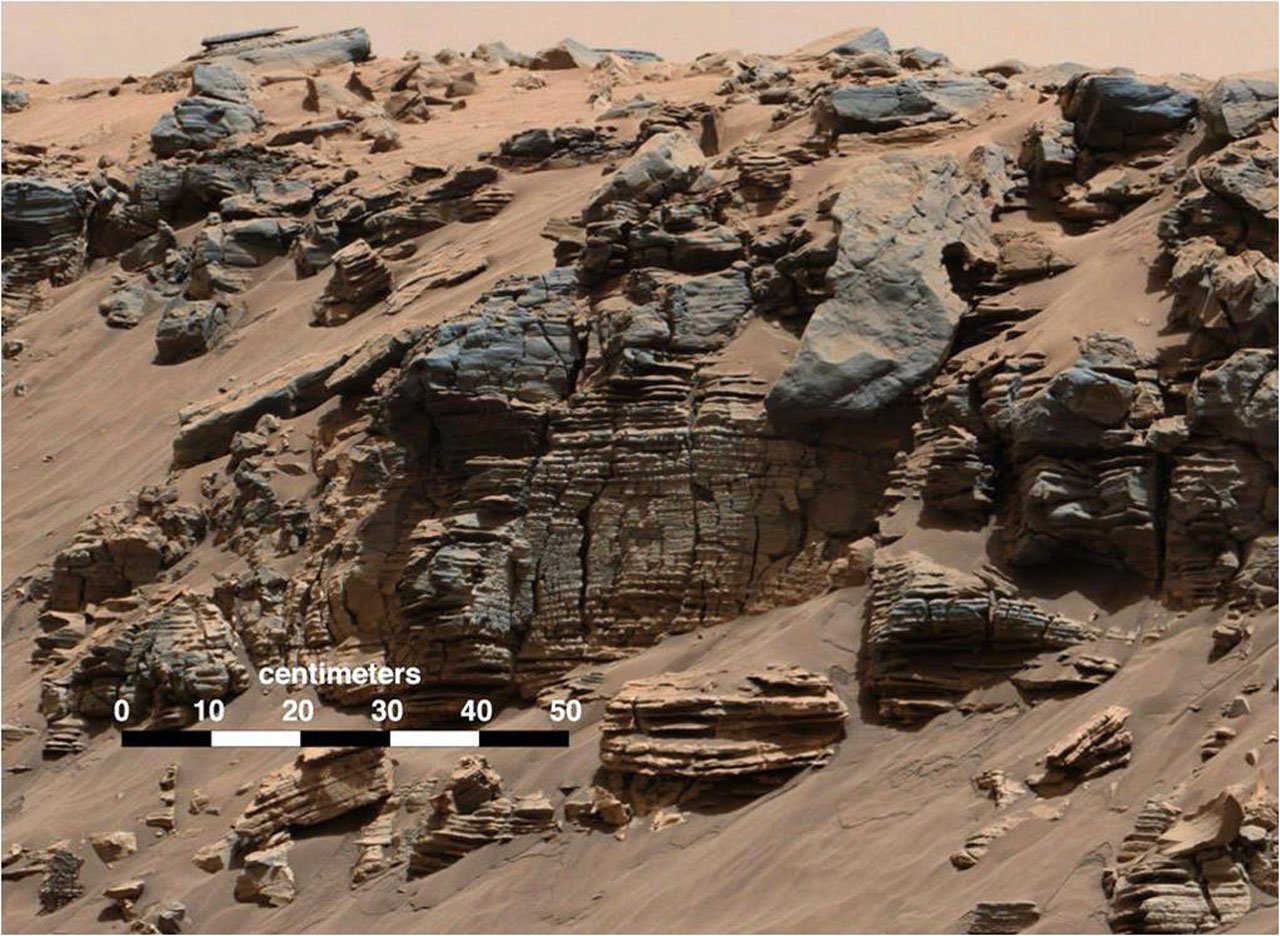Mars' Raindrops May Once Have Been Bigger Than Earth's

Billions of years ago, rain on Mars was heavy enough to shape the planet's surface, carving channels into the red dirt and washing away parts of impact craters, new research suggests.
Some of the Red Planet raindrops falling in the ancient past were likely even bigger than the ones we're used to here on Earth, according to the study.
The study's authors — Robert Craddock of the Smithsonian Institution in Washington, D.C., and Ralph Lorenz of the Johns Hopkins University Applied Physics Laboratory in Laurel, Maryland — modeled the rainfall of ancient Mars by taking into account how the planet's atmosphere has changed over the eons. [Photos: The Search for Water on Mars]
Just after Mars formed about 4.5 billion years ago, it likely had a thick atmosphere with a pressure that was about four times that of Earth's current air, the researchers determined. They calculated that such high pressures would have resulted in tiny raindrops just 3 millimeters or so across.
But pressure dropped on Mars as the years went on, changing the nature of the planet's rain, the researchers said.
"By using basic physical principles to understand the relationship between the atmosphere, raindrop size and rainfall intensity, we have shown that Mars would have seen some pretty big raindrops that would have been able to make more drastic changes to the surface than the earlier fog-like droplets," Lorenz said in a statement.
At an atmospheric pressure equivalent to that of Earth's, for example, Martian raindrop diameter likely maxed out at about 7.3 mm — nearly 1 mm larger than current Earth drops, the researchers found.
Get the Space.com Newsletter
Breaking space news, the latest updates on rocket launches, skywatching events and more!
"However, rainfall from such a storm would be only about 70 percent as intense on Mars, primarily due to the lower Martian gravity and resulting lower terminal velocities of the raindrops," Craddock and Lorenz wrote in the new study, which was just published online in the journal Icarus.
"There will always be some unknowns, of course, such as how high a storm cloud may have risen into the Martian atmosphere, but we made efforts to apply the range of published variables for rainfall on Earth," Craddock said in the statement. "It's unlikely that rainfall on early Mars would have been dramatically different than what's described in our paper. Our findings provide new, more definitive, constraints about the history of water and the climate on Mars."
That history has been an eventful one. Data collected by NASA's Mars-orbiting MAVEN spacecraft suggests that, by 3.7 billion years ago, the solar wind had stripped away most of the Red Planet's air. Today, Mars' carbon dioxide-dominated atmosphere is just 1 percent as thick as that of Earth.
As a result of this loss, Mars shifted from a relatively warm and wet world — with rivers, lakes and perhaps even oceans — to the cold and dry planet we know today.
Follow Mike Wall on Twitter @michaeldwall and Google+. Follow us @Spacedotcom, Facebook or Google+. Originally published on Space.com.
Join our Space Forums to keep talking space on the latest missions, night sky and more! And if you have a news tip, correction or comment, let us know at: community@space.com.

Michael Wall is a Senior Space Writer with Space.com and joined the team in 2010. He primarily covers exoplanets, spaceflight and military space, but has been known to dabble in the space art beat. His book about the search for alien life, "Out There," was published on Nov. 13, 2018. Before becoming a science writer, Michael worked as a herpetologist and wildlife biologist. He has a Ph.D. in evolutionary biology from the University of Sydney, Australia, a bachelor's degree from the University of Arizona, and a graduate certificate in science writing from the University of California, Santa Cruz. To find out what his latest project is, you can follow Michael on Twitter.









